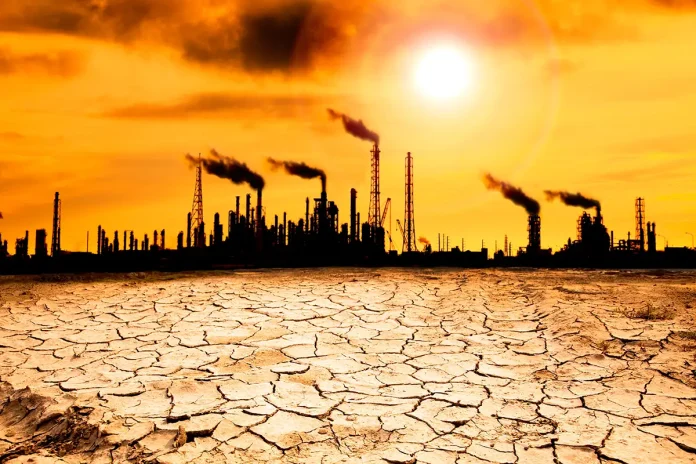Exposing the Truth About its Root Causes.
Global warming, also referred to as climate change, is a significant global challenge with far-reaching impacts on both human and natural systems. The unprecedented rate of global warming over the past few decades has raised concern worldwide and demands immediate action. While we are all aware of the impacts of global warming, it’s imperative to understand its root causes to mitigate its effects fully. In this blog, we will unveil the truth about global warming’s root causes and the primary factors contributing to its occurrence.
The Greenhouse Effect: Understanding the Mechanism
The greenhouse effect is the process by which climate-altering gases trap heat in the atmosphere, leading to increased global temperatures. Without a greenhouse effect, the Earth’s temperatures would plummet, making it uninhabitable for most living organisms. Therefore, a certain amount of the effect is essential for life. However, human activities have increased the amount of greenhouse gases in the atmosphere, leading to an enhanced greenhouse effect and global warming.
Carbon dioxide, methane, and water vapor are examples of greenhouse gases. The majority of greenhouse gas emissions come from human activities such as burning fossil fuels, deforestation, and industrial processes. These activities have significantly increased the levels of carbon dioxide in the atmosphere by 40% since the Industrial Revolution period.
Fossil Fuels: The Dominant Source of Greenhouse Gas Emissions
Burning fossil fuels like coal, oil, and natural gas releases carbon dioxide into the atmosphere, making it the largest contributor of greenhouse gas emissions. Besides carbon dioxide, the combustion of fossil fuels produces other pollutants such as Nitrogen Oxide (NOx) and Sulfur dioxide (SO2). These particles mix with the atmosphere and cause acid rain, contributing to deforestation and other environmental hazards.
Industries, transportation, and energy production are the primary sources of greenhouse gas emissions from fossil fuels. In industries, fuels used for heating and cooling purposes generate the highest emissions. Transportation also uses fuel derived from fossil fuels leading to the movement of goods and people across the world. And, energy production through the use of fossil fuels for electricity generation is another prominent source of greenhouse gas emissions.
It’s crucial to find alternatives to fossil fuels and switch to renewable energy sources like solar, wind, and hydropower to reduce greenhouse gas emissions drastically. In addition, efforts like carbon sequestration or capture and storage can reduce carbon dioxide emissions produced from large industrial processes.
Deforestation: The Silent Contributor to Global Warming
Deforestation is the process of cutting down forests, substantially contributing to greenhouse gas emissions due to the burning and decomposition of wood. Trees absorb carbon dioxide from the atmosphere and convert it into oxygen through photosynthesis, which is a natural carbon sequestration mechanism. Cutting down trees contributes to the release of carbon dioxide into the atmosphere.
Deforestation also leads to land degradation, soil erosion, and loss of biodiversity, negatively impacting ecosystems. It’s, therefore, essential to support reforestation and forest conservation efforts worldwide to mitigate climate change.
Agriculture and Livestock: Hidden Factors in Climate Change
Agricultural practices contribute to global warming through the conversion of land for crop production, leading to deforestation and the use of fertilizers and herbicides. These chemicals cause nitrous oxide emissions, significantly contributing to the greenhouse effect.
Animal agriculture also contributes to climate change due to the emissions of methane, a potent greenhouse gas. Livestock produces methane during digestion, and this gas is released through belches. As a result, cows, pigs, and sheep are responsible for about 14.5% of the world’s greenhouse gas emissions, surpassing the transportation sector.
Reducing meat consumption, supporting sustainable farming practices like agroforestry, and reducing the use of chemical fertilizers and herbicides are practical steps to reduce emissions from the agricultural and livestock sectors.
Industrial Processes: Unveiling Emission Hotspots
Industrial processes are significant contributors to greenhouse gas emissions through manufacturing, mining, and chemical production. Manufacturing and chemical production release greenhouse gases into the atmosphere through production-related activities like the use of fossil fuels, combustion of chemicals and substances, and transportation.
Additionally, mining and mineral extraction emit greenhouse gases, especially when extracting fossil fuels or mining minerals like aluminum, iron and cement. The cement production process generates carbon dioxide emissions through a chemical reaction during the production process.
To mitigate future impacts of industrial processes, clean technology and innovative production methods, including circular economy processes, can reduce and reuse emissions to reduce waste and promote environmental conservation.
Urbanization and Infrastructure: The Rising Impact
Currently, over half of the world’s population resides in urban areas, with rapid urbanization driving significant greenhouse gas emissions. Industries, transportation, and energy consumption in urban areas drive the bulk of greenhouse gas emissions, with cars, buses, and trucks responsible for 23% of all climate-altering emissions, according to the International Energy Agency.
However, cities can be an integral part of the solution to climate change by promoting active and public transport, devising smart and sustainable building designs, and moving towards renewable energy sources. Collaborative initiatives such as carpooling, smart traffic management systems, and citywide renewable energy projects can significantly reduce greenhouse gas emissions.
Conclusion
In conclusion, acknowledging and understanding the root causes of global warming is crucial for mitigating its effects and ensuring a sustainable future. It’s essential to reduce greenhouse gas emissions from fossil fuels, deforestation, agriculture, and industrial processes while promoting sustainable urbanization to make vital strides in addressing the root causes of global warming. Individual and collective action is necessary for global efforts to reduce the impact of global warming and limit the devastating effects of climate change.
















